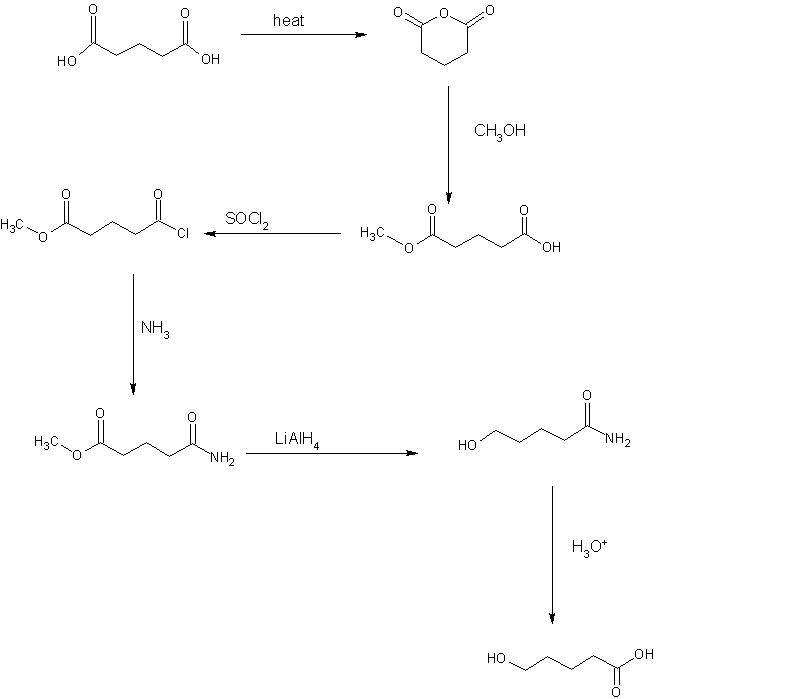 1
1briliant work srinath....
i am sorry to confess that it was my self-made question...
hope it was not a time waste solving this...
thanx srinath n nishant as well....
 1
1its called diazonium salt......
ok thank you!!
 1
1Sky , I'm sorry . The method is wrong.
THere's a slight problem.
I'll post the correct soln in another day .
LAH reduces even the amide . I'll just take diversion there possibly.
tll then it's fine.
Possibly . we can then , carry out Hofmann's degradation and then add NaNO2 with HCl . this will give a comp containing ester gp and also a salt. I forget what it's called . It has a N2+ and Cl- . then add water to get teh desired product. I think.
I'll confirm in a day.
 1
1okk thank u...i got the ans
 1
1Skygirl , why should you feel sorry ? I should say ,thank you . It's brilliant.
It'll help us prepare better . And this definitely isn't a waste of time. It covers a good lot of concepts.
Arjita , why do you think CH3+ attacks? It's actually CH3O- which attaks . Remember that there are electrophilic carbons present in the substrate. not nucleophilic.
 1
1Abhishek , your method is fine , yet in any given organic reacn. the yield is of utmost importance. there are possibility of two SOCl2 molecules reacting with the same molecule.
Also , Rosendmund redn , is very unreliable as a practical reacn as it yields abt 8-9 byproducts which are difficult to separate, even if you do it , there is always a chcnce of getting impure products.
You're essentials are correct , otherwise .
but a lot of assumptions.
Read 5000 Named Reactions.
available on the net.
 33
33One more method..........(3 steps only hopefully it will work)
Step 1add 1 equivalent of SOCl2 since molecule has symmetric -COOH groups therefore it does not matter which -COOH is converted to -COCl
Step2now perform Rosenmund reduction(H2 Pd BaSO4) to convert -COCl to -CHO leaving -COOH as it is.
Step3Now add NaBH4 it will reduce -CHO to -CH2OH leaving -COOH undisturbed.
 33
33Ok if U r not happy with that step of conversion frm ether 2 alcohol use HBr in presence of aq H+ then Oxygen will protonated and Br- will attach -CH3 by SN2 and make CH3Br and the desired alcohol.
 1
1i had one doubt in the soln... how u splitted CH3OH IN ch3+ on OH- although oh- is a poor leaving group plzz tell
 1
1Please give the molecule . then It'd would be much easier. because . It depends on structure I think.
 1
1Thank you Nishant !
I've probably got a way.
 62
62i think u could try making an ester.. then break it such that there are 2 different functional groups.. amine kind?
so then u could proceeed to do what u want.. just a guess.. i am not good at organic.. but just have been seeing this unsolved for long now!
 1
1try remving one cooh group and then do your work with the other cooh group ....and try placing a cooh group again ....its just an idea....
 1
1yaar.... watever i am trying to do is happening with both of them!!! i dun think this is possible.....
 1
1I don't think it's possible to reduce only one selectively . A many step process may be possible.
 33
33there must be some super reagent???????
 1
1The molecule is pentan-di-oic acid...
